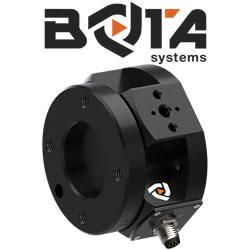Drones And Robots For Inventory
.jpg)
Various kinds of robotics and new technologies are revolutionizing the practice of inventory management.
Aerial drones and mobile robots both have their specific uses in inventory handling. Companies are doing much more with warehouse spaces and inventory processes, by utilizing all of the automation that these machines provide.
As we’ll see, many of these capabilities are tied to central data warehouse and artificial intelligence systems that help manage the entire inventory of a business. Knowing more about this can help companies to modernize and build efficiencies.
Inventory Handling – Automation Is Key
There are a lot of valuable use cases for automation in inventory handling.
Business inventory constitutes a sort of captive asset. Everything is sitting in the warehouse or facility – it's there for the taking. The challenge is keeping it organized, and applying the right data to processes.
This is where the drones and robots come in. The machines can do a lot of what humans used to do in detailed inventory management. In some ways, the technology is perfect for the kind of granular oversight needed in inventory processes. The typical warehouse is a data-rich landscape, and trying to document everything with human effort can be challenging. Leveraging AI makes a lot of sense in these scenarios.
Drones and Aerial Surveillance
Many of the specific use cases for drones involve collecting valuable inventory data by observing the environment.
However, there are a lot of pieces of data to capture. Some are more obvious than others.
For example, many of us might think about using drones to scan for product labels or sizes of boxes, or other visual elements, but what about environmental data?
Specific use cases show that drones can also be used to record things like temperature and humidity, or other physical dynamics that are not visual in nature. This can be helpful, for example, in cold chain storage, or in fleet management. When these drones are tied to larger observation and evaluation systems, they can be some of the main tools for getting the necessary data into the model, for building the business intelligence that drives automation itself.
Mobile Robots and Inventory
Robots, then, have the ability to physically manipulate items. They can both go find an item, and pick it up to deliver it for human use.
There is often a human in the loop or HITL element here. Robots typically don't completely replace human staff. Instead, they do a lot of the heavy lifting or labor-intensive processes that used to be done manually. Then humans supervise or make observations, confirming what's to be done with inventory pieces and weighing in on what the automated system is providing. The better a company fine-tunes this approach, the more precisely the workflows use the talents and offerings of the computer and the human worker.
Experts have identified robots as capable in helping companies to:
- Get rid of ‘deadstock’ or unsellable inventory
- Reduce risk of stockouts, where companies run out of available inventory
- Decrease lead times, which is a measure of inventory capacity: the sum of the supply delay, and the reordering delay
With these kinds of goals and objectives, companies pursue different inventory models. For example, a new inventory model is called just-in-time inventory. It's the idea that the company is going to keep a leaner inventory on hand, which can cut down on costs and effort.
All of this is easier to do when there's an automation system in play to help provide up-to-date data on inventory metrics.
We can see that major retailers and other businesses are contemplating using robots and drones in these ways. Both types of machines can also be helpful for delivery and other processes.
Increasingly, the modern warehouse is becoming a place where machines and humans hand off processes to one another. The biggest retailers, and other smaller businesses, can keep the productivity they need without requiring the human staff to work at the breakneck pace associated with these tasks traditionally.
Take a look at what's happening with robotics today in industrial environments. New technologies are quickly re-inventing ow we handle inventory – and everything else in a business model. The fruits of ‘Industry 4.0’ are now evident in the business world – and companies are adapting.
Comments (0)
This post does not have any comments. Be the first to leave a comment below.
Featured Product

